Cow parsnip is a misunderstood plant. Even though it's an edible plant native to North America and a traditional food foraged by people around the world, most of the time I speak to people about it, I hear opinions like the following:
"It makes ye go blind!" "It can only die from a silver nail through the root!" "I'll never eat cow parsnip: there's only one plant, and it's poison parsnip!" "It's all over the roads and trails, storm the woods and kill it with fire!"
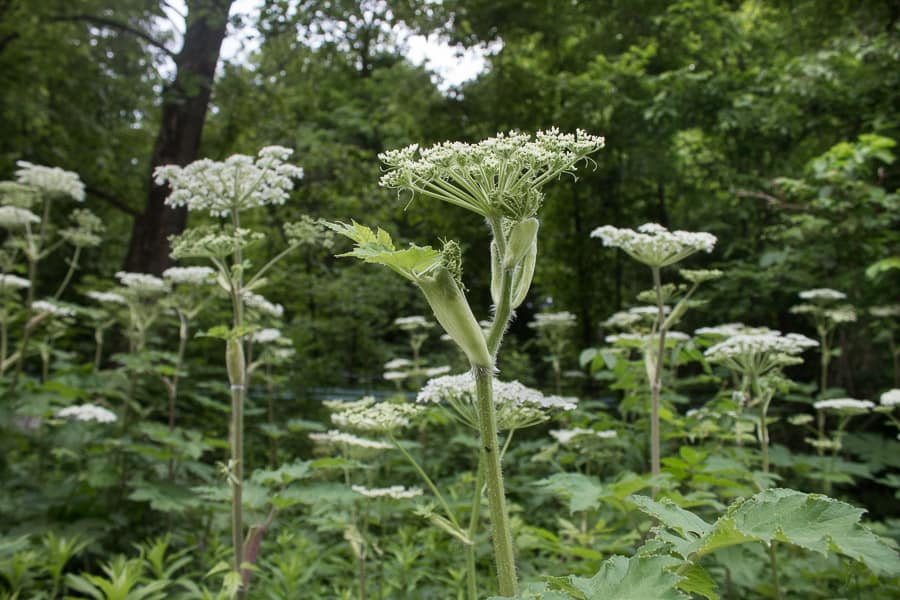
What is Cow Parsnip?
Cow parsnip is an perennial herbaceous plant in the genus Heracleum. The genus contains many plants, and to my knowledge, most of these plants are used as food around the world.
My local species is Heracleum maximum, formerly known as Heracleum lanatum and is found in Minnesota, Wisconsin, and neighboring states. Contrary to some beliefs, it is not invasive in its native range, but will spread, as perennials do.
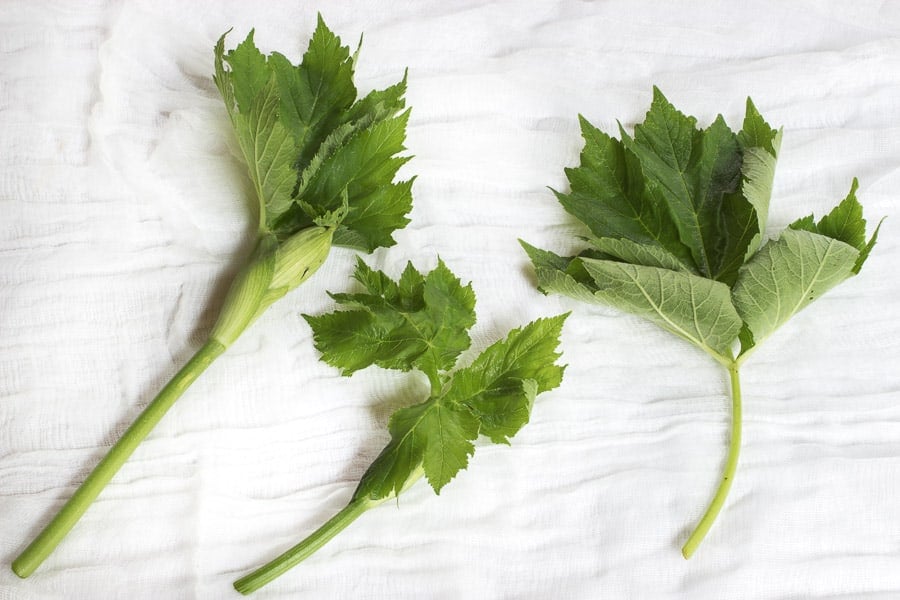
Heracleum sphondyllium is harvested in Europe, and cow parsnip's cousin, the vilified Giant Hogweed (Heracleum mantegazzianum) is also eaten.
Wild parsnip (pastinaca sativa), a non-native plant to the United States is also edible, and is the exact same plant found in your garden.
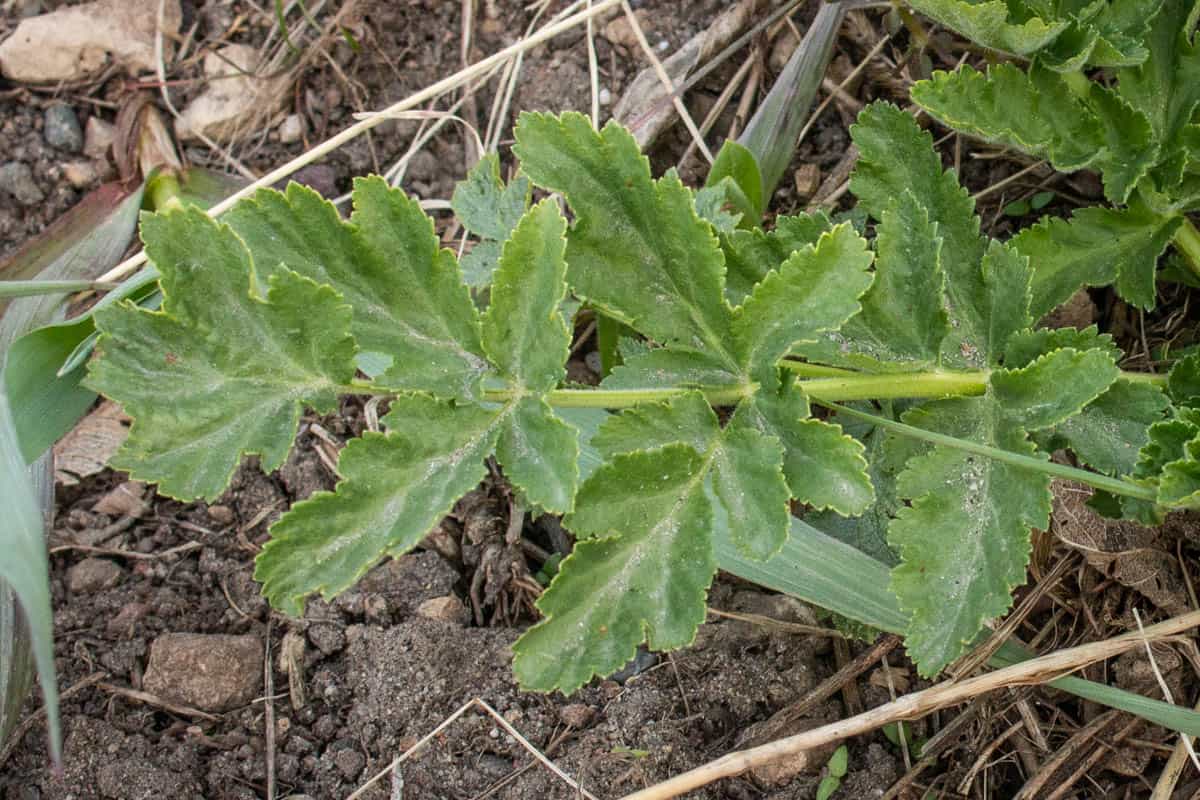
Identification
All of the aforementioned plants are edible, but you do need to be careful harvesting them. First, as cow parsnip is in the Apiaceae, or carrot family, you'll want to know how to identify them.
The plant grows in a variety of habitats, but I typically see them along road sides, on the edges of woods, and along streams and rivers, sometimes next to it's cousin angelica.
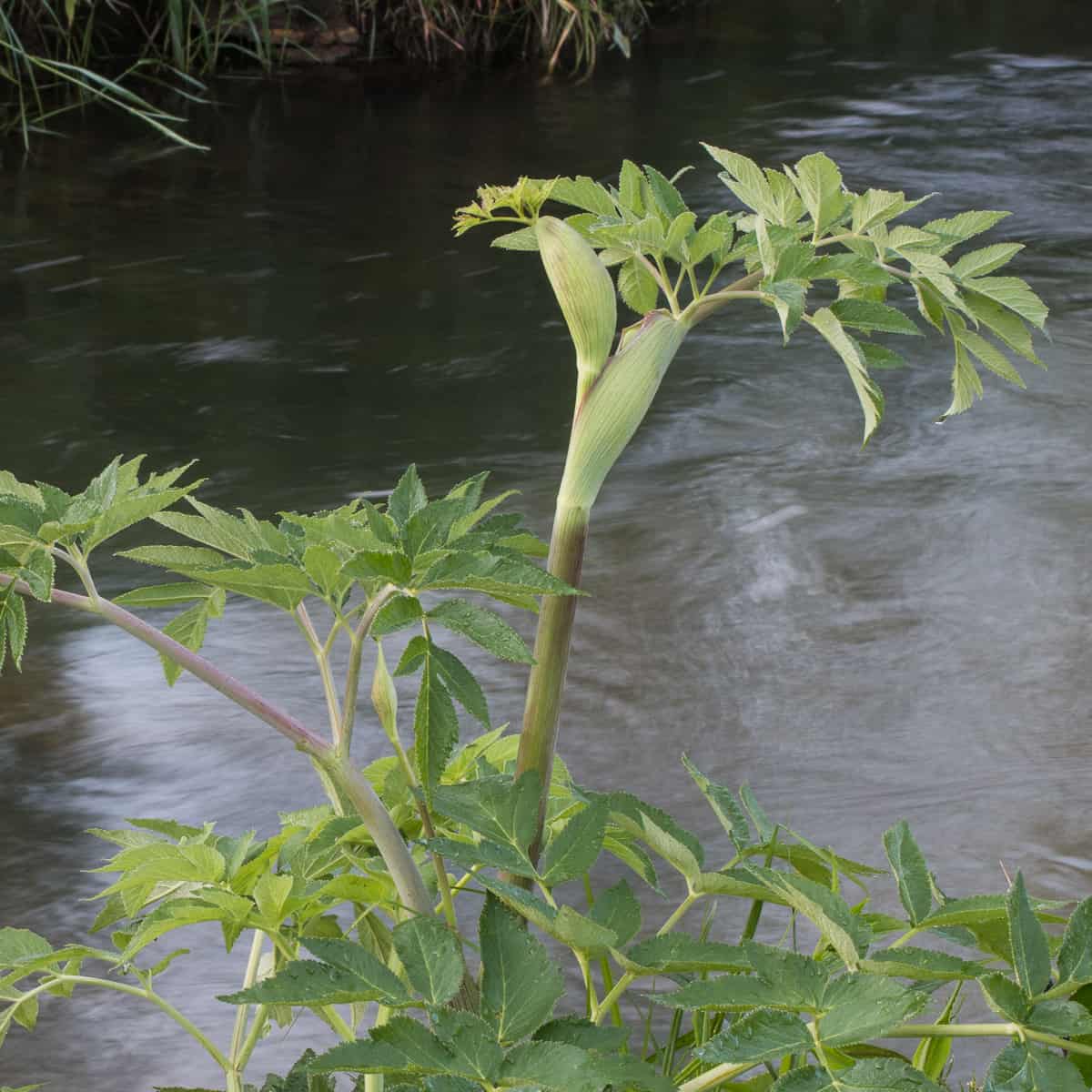
Quick ID tips
Cow parsnip
- Grows in rich soil, along roads and creeks
- Has very large palm-shaped leaves
- The stems are furry, and pure green
- The stems never have and blotchy-red spots
- Grows very tall, up to 6 feet or more
- Has flat-topped flower heads (never circular) with small white flowers
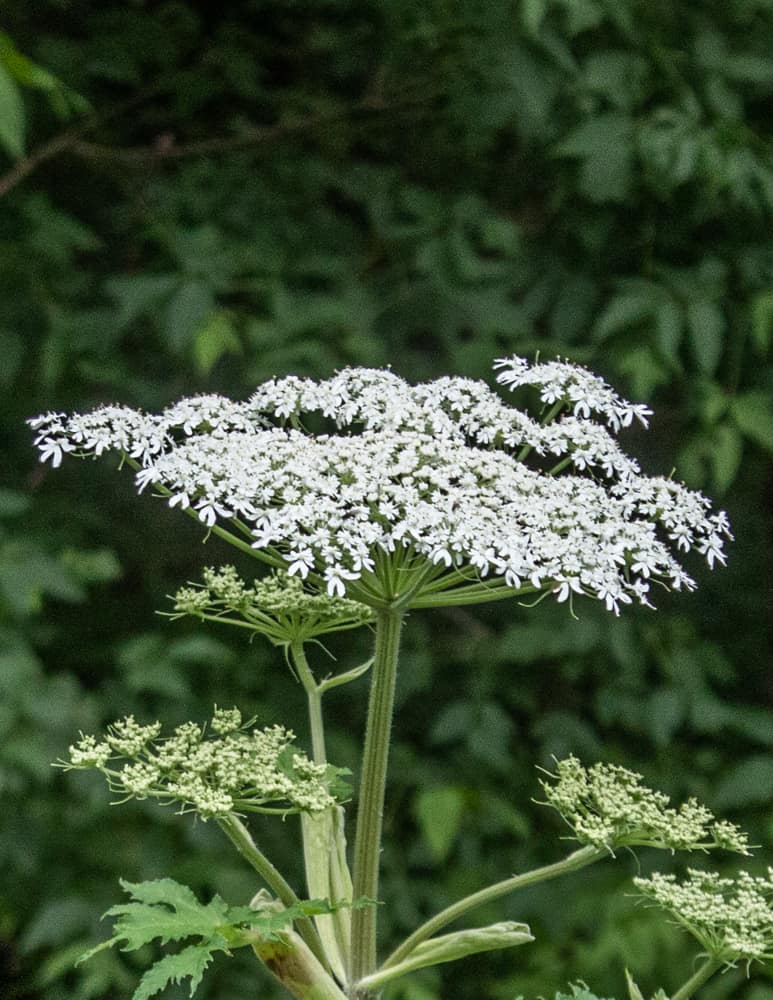
Young cow parsnip plants have a specific look to them. At first they may be difficult to separate from others, but after you practice identifying them, you'll be able to know them at any stage of growth.
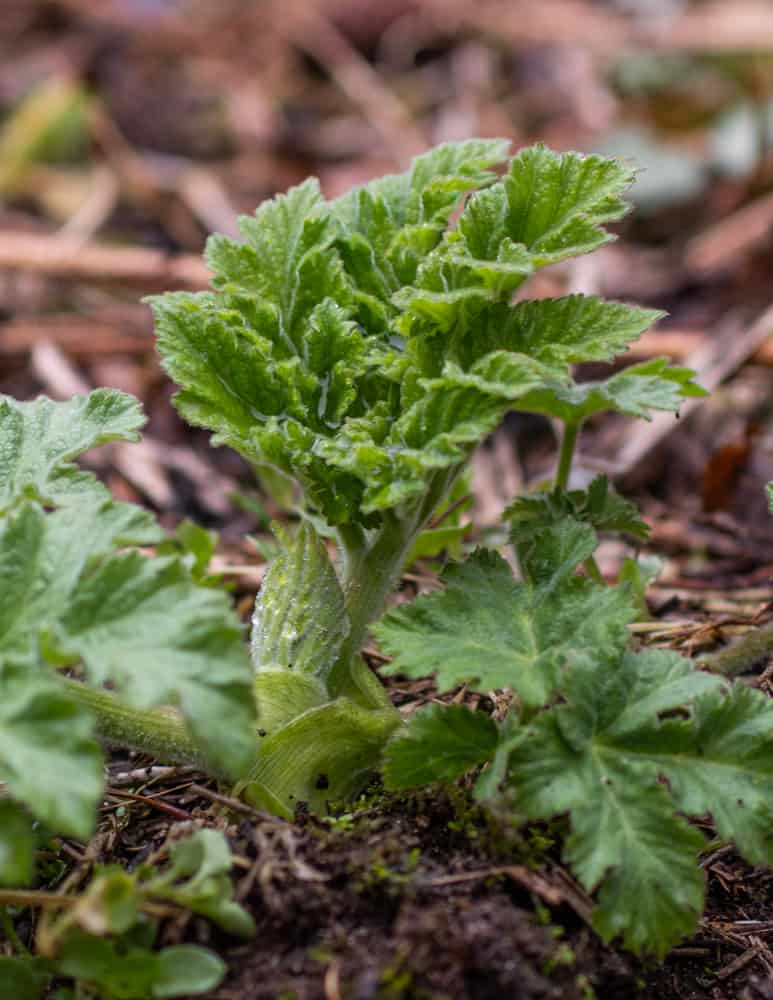
The best time for identification is when the plant flowers and reveals it's flat-topped umbels or flower head covered with small white flowers.

Leaves
The leaves are also very helpful in identifying the plant. Unlike it's deadly-poisonous cousin hemlock, which has leaves that resemble a carrot, cow parsnip's leaves are palmate, meaning they're more palm-shaped, and flat. They're also jagged and toothed. To me the leaves look a bit angry.
As it matures, the leaves get very large, and can be up to 1-2 feet across. and the plant itself commonly reaches over 6 feet in height.
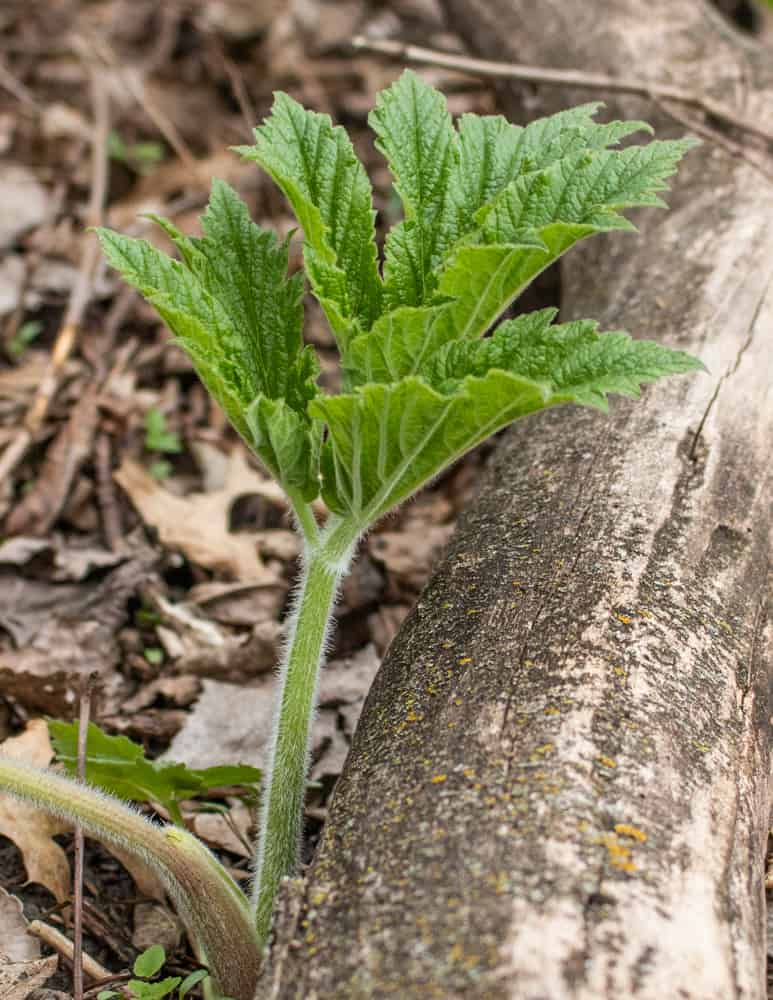
Is Cow Parsnip Dangerous?
The plant is confusing as it's edible, but also potentially dangerous. Cow parsnip is demonized because the above-ground portion of the plant contains compounds called furanocoumarins that can cause skin irritation.
If you get the sap of the plant on your skin and have it exposed to sunlight, it will cause photodermatitis, or a rash. The severity of the rash can vary from person to person, but it isn't pleasant. I've had it on my face.
To avoid getting the sap on your skin you can do a couple things. Here's a few tips:
- Wear gloves when handling.
- Wash your hands after handling or harvesting.
- Be mindful of harvesting, you don't have to wear gloves if you're careful to not touch the cut stems of the plant.
Cooking
Cow parsnip is an edible plant. But, unlike other common edibles like nettles or lambs quarters, it has a strong flavor that some people won't like. For the best result, I suggest you cook with cow parsnip's green parts as you would an herb.
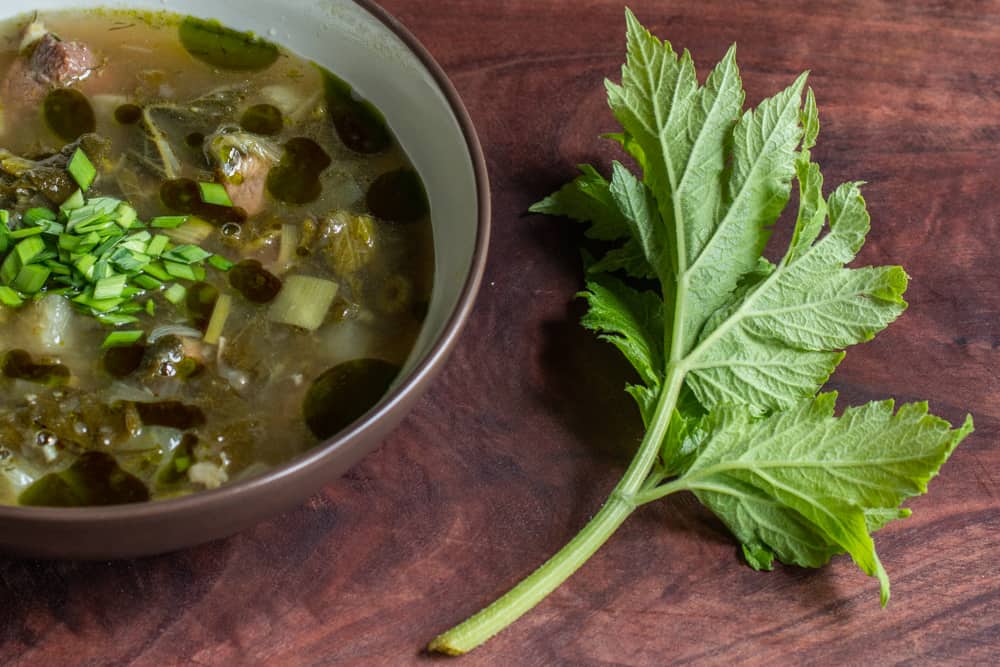
Believe it or not, fermented cow parsnip was the key ingredient in the original Borcht, before beets were added. Here's a list of the plant's edible parts.
Edible parts
Young leaves
These are milder and more tender than older leaves, but you still want to use them in moderation.
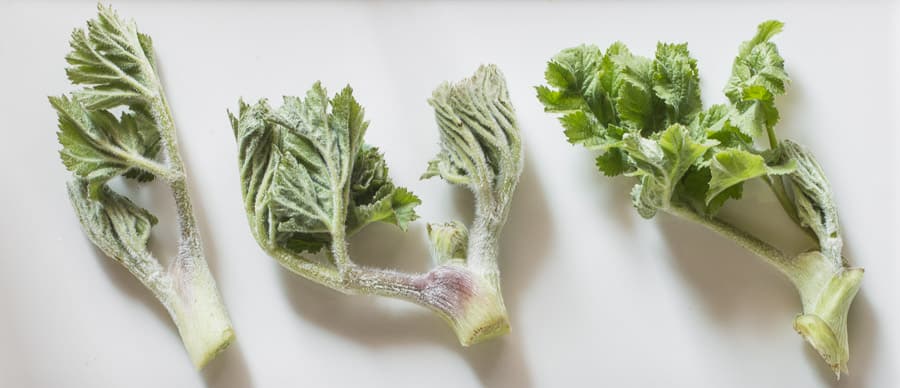
Older leaves
Older leaves are not to be cooked as a vegetable, but you can use them as a wrapper for foods as you would grape leaves.
Unripe Blossoms
The pods that grow from the flower stem are the most delicious part of the plant, and what I suggest you harvest first.

They're very similar to the unopened flower blossoms or angelica, which are harvested as a vegetable in Italy and known as Zavirne. They make incredible tempura. One of my favorite names for them is cacoon broccoli.
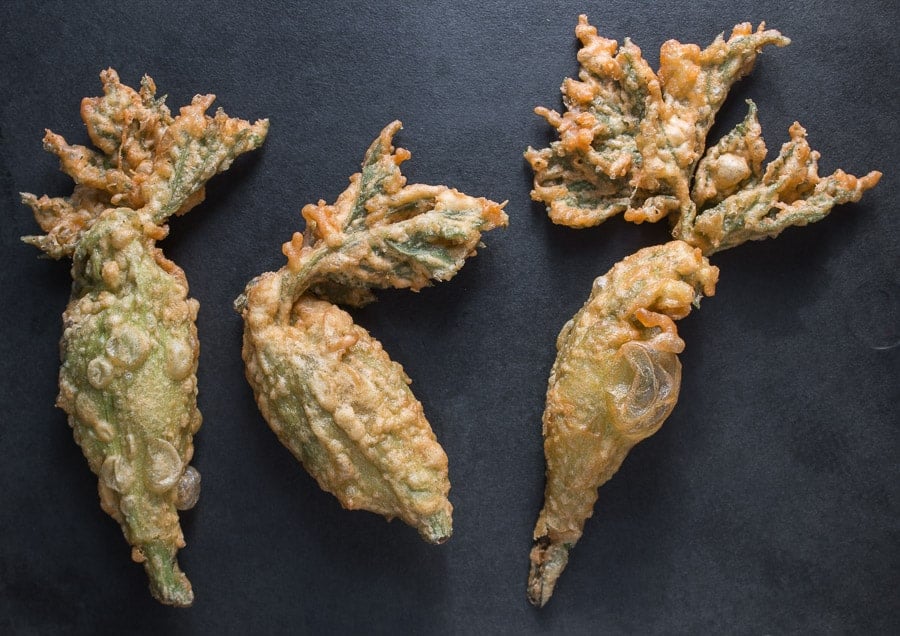
Seeds
The seeds are likely the most consumed part of the plant. They can be harvested while unripe and green, and can be good infused into vodka or drinks.
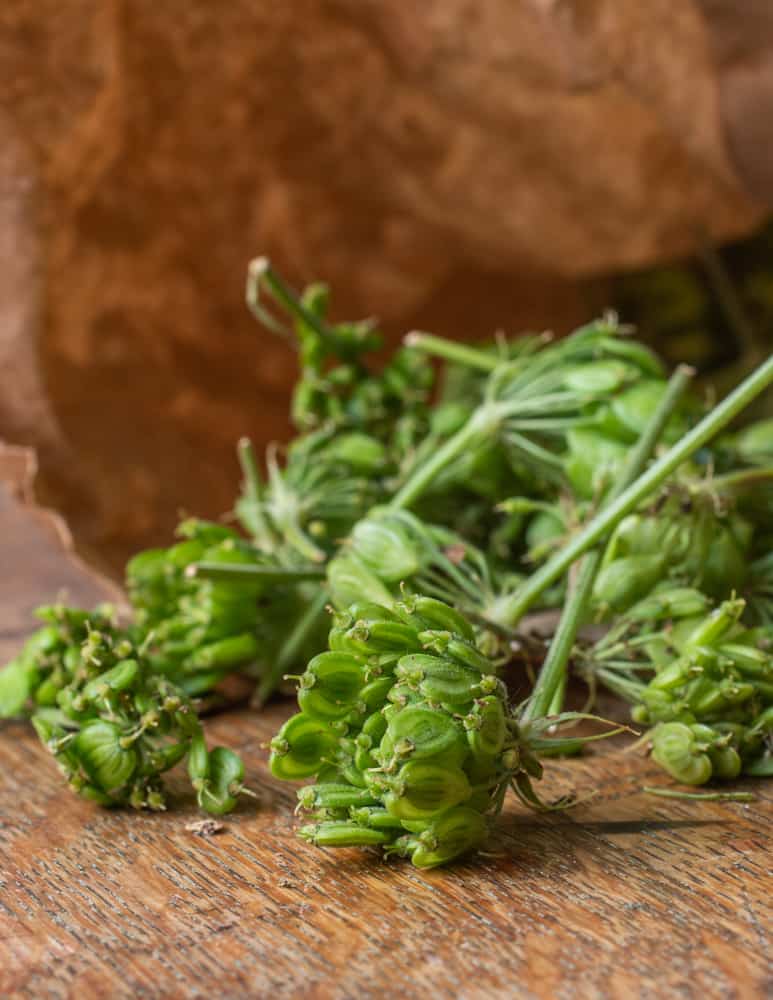
The mature seeds are dried and known as the spice golpar, an ancient Persian seasoning used to season beans and legumes, and plenty of other things. It's a fantastic seasoning for beans and strong-flavored sauces.
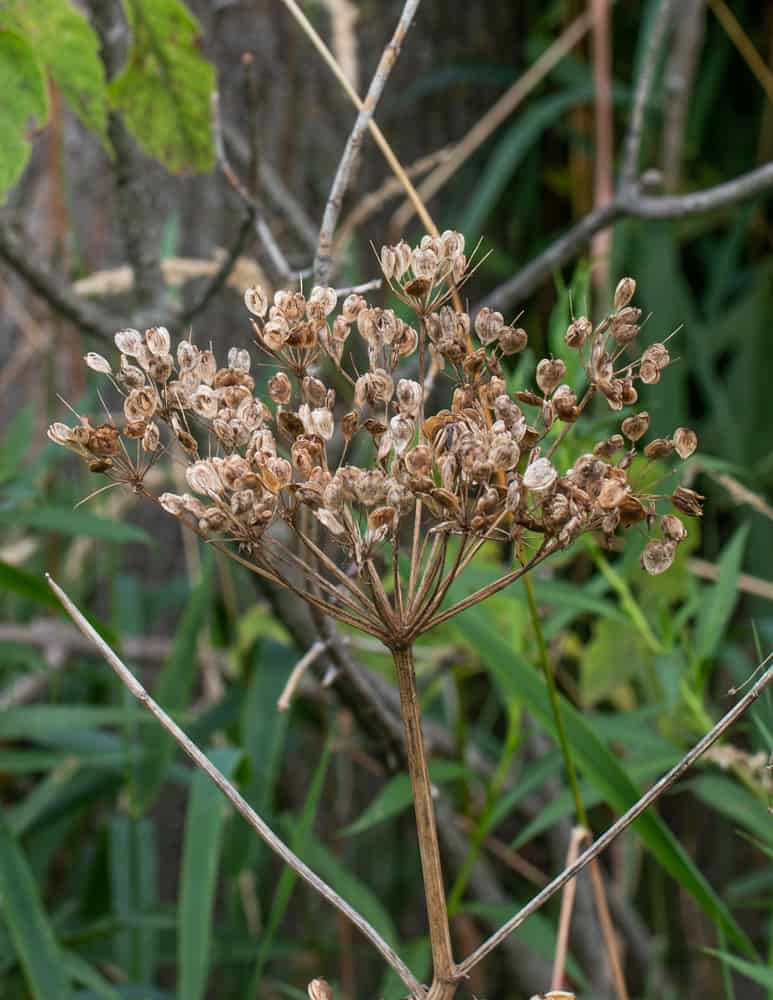
The best part about the seeds, is that because they're dried, harvested at the end of the summer, there's no need to worry about the photo-toxic effect of the sap. Handling dried plants is completely safe.
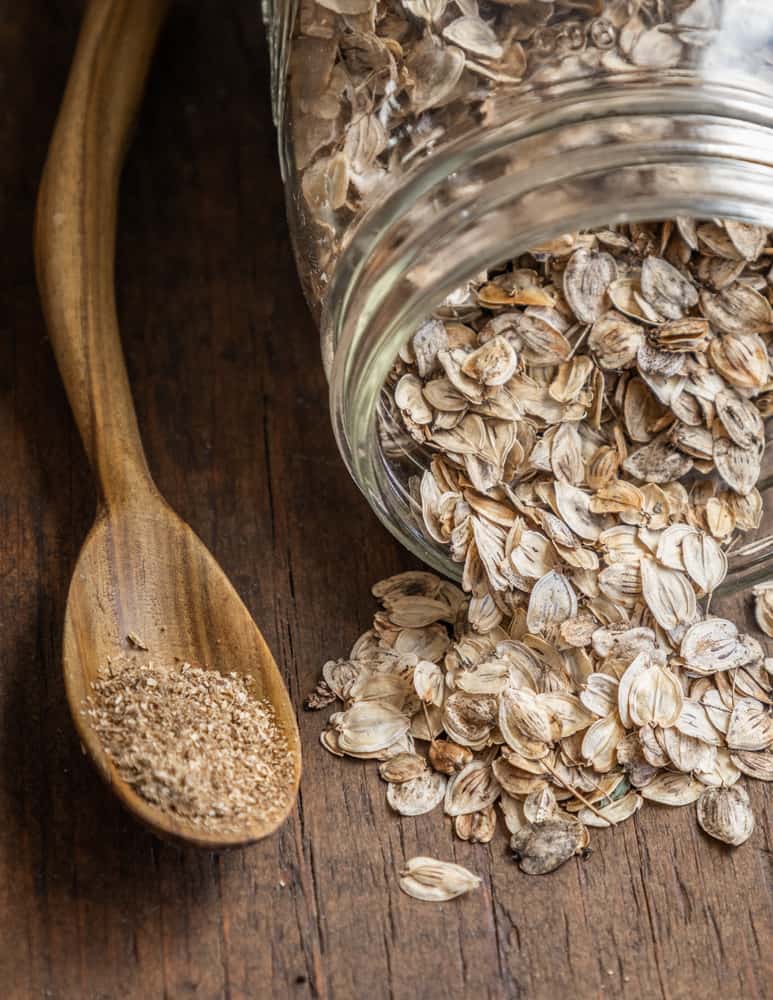
I had a great conversation with Botanist and author Stephen Barstow about this plant when he gave a keynote speech at the Midwest Wild Harvest Festival a few years ago. We both love using the spice golpar, and think it's an excellent addition to a wild food pantry.
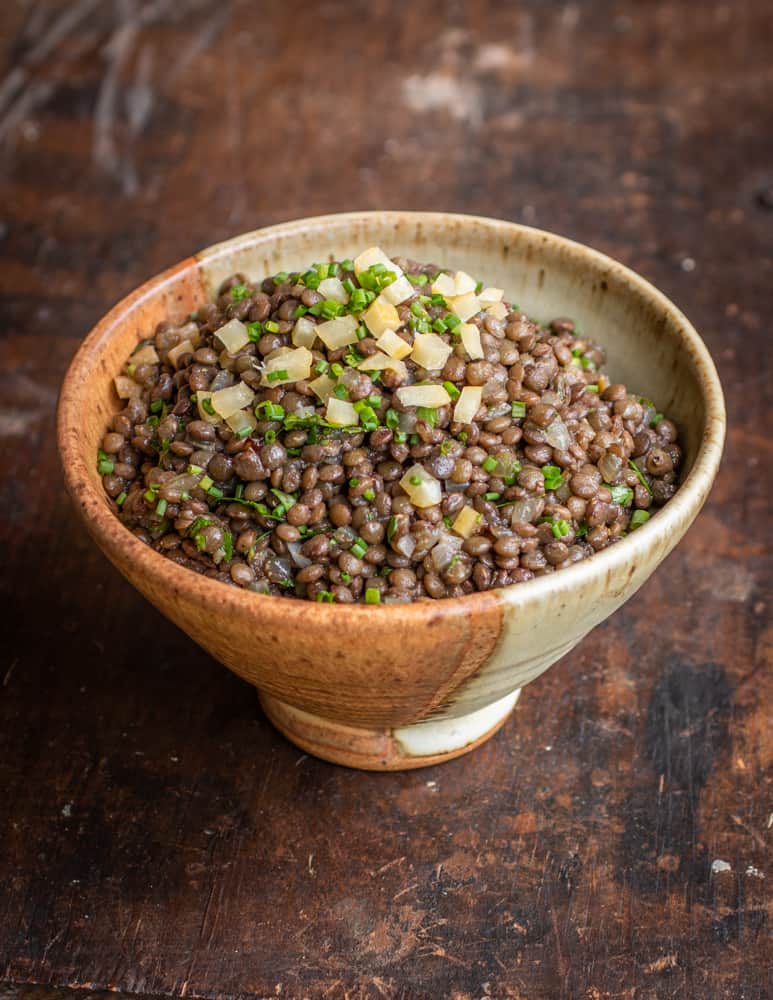
If you harvest the seeds, the first thing you should make is my salad of black lentils, or just use them to season a salad of cooked beans, such as chickpeas.
Recipes
- Cow Parsnip Blossom Tempura
- Black lentils with golpar and preserved lemon
- Salsa verde with cow parsnip seed

Carla Beaudet
This is the year when I finally found Cow Parsnip in abundance. There is a small patch of it in a ditch on the edge of a farmer's field near where I live, but it's in sight of the house and I haven't wanted to ask permission. But this year I've found it in 3 different areas at altitude (in Appalachia at over 3500 ft.) all in places next to the road and where the mountainside is hydrated by a sheet spring. I've made your tempura, which was delicious, but which really obliterated the flavor that I thought would be impossible to quell. I went out for more blossoms, and tried steaming one of them. This preserves the flavor, but then it's got to be sliced to make the texture appealing. I also really, really like the syrup/sugar route with these; the syrup I inadvertently made by candying the stems as one would for Angelica is superb. Just read back over the comments, and might go after more just to make syrup as per Jacqui's recipe with the citric acid.
Alan Bergo
Thanks Carla. Make sure to go back for some seeds. I transplanted one into my front yard last year in full sun-just one. This year it’s massive, nearly 7 feet tall with a stem as thick as my forearm. People stop all the time and say how pretty and unique it is. Funny how if it’s given a dedicated space it’s a gorgeous plant, but out in the wild it’s seen as a noxious (native) weed.
Carla Beaudet
Ok, harvested a bunch of green seeds to try for both an alcohol infusion and a syrup, or perhaps syrups with and without the citric acid? Have you played with that? It's hilarious that you planted one in your front yard. I would be careful; if it likes where you've put it, you could get many, many more. I've found a stand up high on the mountain that stretches about 1/4 mi. next to the road. But yes, these are gorgeous plants, and their aroma really makes me want to keep exploring uses for this plant, even though it's way too intense in its raw state. I kind of wonder what koji would do to it (but these days I'm wondering that about everything I've ever cooked with - LOL!).
Alan Bergo
Hey Carla. I haven't worked with the green seeds much, but I am planning to add them to Ethiopian spiced butter soon as it takes strong aromatics well. I typically cut the plant down and harvest the seeds when they're ready and I weed out any young ones so they don't shade everything out.
Brian
Hey Alan, just wondering if there's any difference in taste that you've noticed between Giant Hogweed and Cow Parsnip? (also just wanted to confirm that the phototoxins become inactivated after cooking even if you get some on your hands or anything like that) Thanks!
Alan Bergo
Hi Brian. I haven’t eaten hogweed yet, really rare where I live. The caution with these plants is only regarding the above ground, leafy green portions that contain liquid. When dried or cooked they’re harmless.
Ellen
As a word of warning, Giant Hogweed is the plant with purple blotches. It’s highly poisonous and should never be eaten. It also look very similar to hogweed/cow parsnip which is edible when cooked, but the sap is irritable when raw.
Alan Bergo
Nope. Hogweed is edible and traditionally eaten in Eastern Europe. It is not poisonous, and misinformation like that perpetuates unfortunate stereotypes. It needs to be treated with caution, just like wild parsnip and other carrot family plants due to the sap. Celery juice can give some people a burn too.
Kelly H
Cow Parsnip? Aye, it’s a weed!
It won’t be long before those flower buds appear on the plants in my yard, I’ll be giving that tempura recipe a shot. The only thing more abundant here than cow parsnip is dandelions.
Two notes of interest: The time I got an extreme case of blisters from cow parsnip was when I made the mistake of weed whacking it. Lifelong Alaskan, I’ve brushed against the stuff since I was a kid and never had a reaction. After fifty years of life I figured I was immune or it wasn’t really a thing. It’s a thing. An awful awful thing. The scars were mostly gone after a year, but the memory will always remain. You’ve mentioned it Alan, but it doesn’t hurt to repeat. Those giant blisters sure hurt, two weeks for the scabs to heal over. Wear long sleeves and don’t use a weed whacker. Respect this plant.
Next, I’ve used the dried stalks to make penny whistles and other musical instruments. They’re wonderful because it’s easy to work, abundant, and they’ve lost any toxicity (as far as I can tell) by the time they’re dried out. A bit fragile, but the trade off in workability is worth it because I can show students how to craft a woodwind with simple hand tools in an hour or two. With some creativity there’s all kinds of things the dried stalks can be used for.
Alan Bergo
Thanks Kelly. Yes, weed whacking or mowing over young plants is usually the issue. I should probably put a note in about that, thanks for the reminder.
Anna Haglund
Hello, I am supplying flowers for a friends wedding in a couple of weeks. I just passed a lot of cow parsnip and the pink-ish colour and shape would be perfect. But are they safe to pop in a vase?
I would really appreciate your knowledge on this.
Thank you
Anna
Alan Bergo
It's absolutely safe, just don't wipe the sap of the green above-ground portion on your skin. This reminds me of when I had a florist at my last restaurant where every week during the growing season I would bring in wildflowers for the arrangements on the tables. Thanks for the trip down memory lane.
Cory Gunter Brown
Hi Alan,
My thoughts have been turning toward cow parsnip more often lately and I've been spending time with it trailside on my hikes in the Oakland hills of California. You mentioned the stalks are NEVER speckled or blotched with red... I'm very familiar with identifying poison hemlock, but I've seen what looks to me like cow parsnip in every way but with large areas of solid deep red on the stem. It is definitely not poison hemlock (I'm a noticer and not over eager to have identified something).... Is there a possible third plant?
Thank you!
Alan Bergo
Hi Cory, without knowing where you are, I'm going to wager you should cross reference that with Angelica. My local variety is Angelica atropurpurea, and its stem looks as you describe. When sliced, it smells strongly of gin. It has phototoxic sap too.
Kelly H
Just as a heads up, on rare occasion I come across cow parsnip with purple speckles on the stem. It is without a doubt cow parsnip, large palmate leaves, the characteristic fragrance, and it’s growing among the “normal” looking cow parsnip. Giant hogweed hasn’t made it this far north (Anchorage) and these plants are to small to be that anyway. Happy to send photos if you’d like.
Linda Reinhart
I see Alan has requested information about native uses of Heracleum lanatum. I live on the Kenai Peninsula in Alaska. The plant is so prolific here it is considered a garden thug. The indigenous tribe here is the Dena'ina - of the Athabaskan group. In her book Tanaina Plantlore, Priscilla Kari records extensive native use. The native name for the plant is ggis (also spelled "gaess"). The current local word is "pushki". Ms Kari lists "buchgi" as a "Russian loanword". All parts of the plant are used. The stems, sometimes peeled, are eaten either boiled or raw (sometimes dipped in oil), chopped into soups or stews. The dried stem is used by new mothers as a drinking straw. The root is a "medicine for colds, sore throats, mouth sores, and tuberculosis" - chewed raw or boiled and drunk as tea. She further says, "Cow parsnip root is an important medicine for arthritis and other body aches, as well as for swelling, cuts and sores. ... it is effective in drawing pus." For these ailments, they boil or soak the root and use the liquid as a wash, Less effective is a poultice made of the mashed root.
I have recently heard of a common use in local villages of wrapping fresh salmon in layers of pushki leaves and steaming them in the coals of a campfire.
Mark
Linda, I have a feeling you live in Homer? I have been trying to eradicate pushki that is an insurgent; up over a road and across into what was once grass and fireweed. I'm here as I spun off searching ways to kill it DEAD. I still want that to happen as I want a lawn but between you and the author I Have a new appreciation of what the plant can provide. I'm still gonna get rid of it but just across the road is an infinite supply.
Linda Reinhart
Yep, Mark. Homer. I'm learning of a lot of edible plants from Alan Bergo here. We have always foraged, but long ago there was no internet to help us. There is more that is edible than we ever imagined. Keep looking and keep trying. And don't overlook the devil's club next spring. Harvest it just when the new shoots are about the size of your thumb. They need at least blanching and cooling, even for a salad, but they are a real favorite. They also freeze will, blanched.
Gilbert
I see what I called cow parsnip growing along the gravel roads/ditches here in NE Minnesota. What revived my interest was reading that borscht ьорщ the name and stew derive from a related hogweed plant in Russia and Ukraine, borschevik.
Alan Bergo
Yep, you're correct. I actually had a recipe for the original borcht in my book but it ended up getting cut. The soup in question used fermented cow parsnip leaves and shoots, which takes some experimentation as the smell can get quite strong.
Jacqui
Hi Laurie,
my personal experience with the crook of my left arm suggests no long term problems. There is no mark and no evidence that this area is more sensitive than the rest of me this season, i.e., the year after "the event". And "the event" was a blister the size of my palm and at least 1/2 cm high with a few smaller satellite blisters around that. On the other hand, I have olive-ish skin from a mediterranean heritage and I am pretty tolerant of sun in general. Who knows what this would be like were I of blond nordic extraction...
Laurie
Hi Jacqui,
A blister the size of your palm, wow! My blisters were sore and itchy and only the size of quarters. Yours must have been very uncomfortable. The ones on my face have disappeared with no scar or marks, but the ones on my hips and legs have left dark spots. I am less tan in those areas so maybe that's why. The large one on my hand has left a shiny pink area of new skin. Whew! I'll surely be more careful next time! I really appreciate you sharing your experience, it's so helpful. How else do I know, is this normal, should i see a doctor, etc, etc
Laurie G
It's cool to see so many continuing comments on this post, and Alan, ever since I read this post, I have been quite anxious to try Cow Parsnip. So, this year, I did! A friend had some growing on the side of his driveway, so I harvested some young leaves. I are some of the leaf stems and was delighted by the sweet woodsy flavor!
So of course when I ran into bunches of Cow Parsnip growing above a local beach I had landed on with my kayak, I gathered up a bunch more. Again I ate some stems. I also mushed my face into the leaves, smelling the wonderous scent! I put them in my kayak behind the seat and brought them home.
24 hours later, I noticed what looked like a burn on my hand. Later spots came out on my face and on my legs, and when I discovered one on my back -- by this time all areas were developing into a large blister -- I knew I was having a reaction to the Parsnip.
It's *possible* the Cow Parsnip is Giant Hogweed, but some local botanists told me were that the case my blisters would be much worse. In any case, I was at the beach, it was a sunny, hot day, and I had sadly completely forgotten your reference to the potential of reactions. Because I've never had this kind of reaction from a plant, I thought "that won't happen to me."
So anyway, readers, BE CAREFUL with this plant! Now, with my lesson learned, I hope to enjoy many years of delicious eating, while protecting myself from the sap.
Alan Bergo
A great reminder!! Others give the burn too, I got a reminder about angelica a few weeks ago! Garden variety celery can do it too apparently.
Laurie
Celery?! Wow, I didn’t know that. Good to know. And thanks for saying I’m not the only one (and you, too Joaquin.) I don’t feel quite so stupid now.
Jacqui
I feel for you. Last year I got a mega-blister in the crook of my left arm where I had stashed my stash of stems before stuffing them into my knapsack. I have been much more careful since and I warm everybody who will listen to me about it.
Laurie
How do you treat the blisters? And have the dark spots faded? I’ve got one on the back of my lower leg that popped too soon and is not healing as quickly as I’d like. I’ve been using herbal salve and antibiotic cream. I guess I’m just impatient.
Jacqui
Time is the solution. I contracted my blisters in early July. I put on a gauze sleeve to protect it and to prevent abrasion. I remember I managed to keep them unburst till the fluid was reabsorbed. Then I just had a scab for a while. I can't tell you how long it took for all evidence to be gone, but I was swimming in the ocean in August and I know that by September, when I was bicycling in Denmark and Sweden, there was no trouble at all and there is no mark at all that I can see now.
Laurie
Hi Jacqui, thanks for sharing your experience. I guess the important thing is to protect it and allow it to scab over. I've read that blistered areas can be damaged by the sun for some time after. Have you heard the same?
Alan Bergo
I've never gotten blisters, and yes, as Jacqui said, time is the only thing that will heal it. It'll be a little unsightly for awhile. The one I got two weeks ago is barely noticeable now, but that's not the norm.
Jacqui
The ex-blistered areas are of course brand new tender skin formed under the scabs, so it's very sensitive, just like any new skin. I do not think there is anything else special about it. But yes, I would keep the blistered area itself out of the sun for a while if possible. Long loose skirts for the leg area. Is that what you mean?
Laurie Gorham
Hi Jacqui, well I'm not sure. The sources I've consulted seem to suggest that the damaged areas are sun sensitive for a long time, like for years. But you know the internet -- it's difficult to determine what's true or false. At last, the worst of my blisters seems to be healing. I had covered it with hikers tape after smearing it with antibacterial ointment but it continued to feel sore. Today I got the hikers tape off and covered the blister with an herbal salve and it feels much better. Whew! I am hoping i wont have to cover these areas from the sun for years!
Linda Reinhart
Thanks. I did look up golpar and now recipe possibilities are fermenting. Maybe something with roasted potatoes that derives from the hot German Potato salad from my husband's New Ulm roots.
Marcia Cohl
just tried a couple of green seeds from my perennial cow parsley plant---wow! wonderful
beyond lemony flavor! so many uses to think of...must plant some of the seeds in the fall..
Linda Reinhart
Thanks for that hint, Marcia. It's amusing to me to read "one plant". We have fields of it, Its root system is so robust it is almost impossible to eradicate from the flower beds. I am much more tolerant of it now that I know it is so edible. No need to bother planting a garden! Pushki is almost an entire produce section in itself. Ours is just beginning to bloom this week, but I will look forward to the first seed head to try the lemon seeds. How did you use them?
On another note; in Alaska, the huge 2019 Swan Lake fire is yielding bountiful morel crops now. They are hard to reach because climbing through the burn area is very tricky and risky, but our daughter and her husband have been twice and harvested, maybe, 1/2 bushel altogether. They are nowhere near as flavorful as the southern Minnesota morels, though.
Alan
A great way to find ideas for using cow parsnip seeds is to google “golpar”. It’s a Persian spice sold erroneously under the name “Angelica seed”. Excellent with beans as a seasoning, as well as in dishes like zeytoon parvardeh (a sort of olive relish with walnuts and pomegranate molasses). The seeds have a very strong flavor.
Jacqui
Late reply, but on time for this year probably: The green seeds are a great addition to curries and chutneys. I freeze a bunch each year to add to my green tomato chutney when it's time to make that. The flavours really complement well.
Nichole
Thank you so much for the info! I’ve been finding this stuff growing everywhere lately. How does it freeze? Mostly, the flower buds. (Blanche first?) Maybe also the stalks. I can see how the leaves wouldn’t freeze well. Thanks again!
Alan Bergo
You can freeze it, but yes, blanch it first. Funny enough I learned that the hard way. I was freeze wilting leaves thinking that it would denature them and wilt so I could use them for dolmas, and I ended up getting parsnip rash on my face, again.
Linda Reinhart
I just started eating it last summer. So far I have sauteed the small stems and used them in things like omelettes, made "stuffed peppers" from the flower bud while still in their cases, and sauteed the new shoots and served with butter, salt and pepper. In a week or so I will try using young, larger leaves, blanched, like cabbage leaves in a "cabbage roll" style dish. I have not yet frozen any, but I would not hesitate to blanch and freeze like any other leafy vegetable.
Linda Reinhart
Cow parsnip (pushki, in Alaska) is coming up and I enjoyed a serving of blanched shoots with butter, salt, and pepper last evening with grilled salmon. Yum! Now I am contemplating adapting a recipe I find in Epicurious for Stuffed Cabbage With Lemony Rice and Sumac using pushki leaves instead of cabbage. I have researched sumac and find it listed as poisonous - except here: https://www.seriouseats.com/2013/09/foraged-flavor-all-about-sumac.html. What is your recommendation regarding foraging sumac?
Alan Bergo
Hi there. So it depends on which sumac we're talking about here. Rhus typhina (staghorn sumac) is abosolutely, positively not poisonous, but some others related to it you may not want to eat. Staghorn sumac has been consumed as a seasoning heavily in the Middle East for a very long time. Thanks for eating cow parsnip, it's a good plant.
Linda Reinhart
Thank you, Alan. I will identify my sumac carefully. Hopefully, I will find some staghorn sumac here.
Laura
How about the root of the cow parsnip? It's wonderful to learn of all these other uses, but I am also keen to find some nice roots I can roast. Thanks!
Alan Bergo
Negative. I've seen vague references and translations from Latin that seem to infer it was consumed like parsnips, but the small yield, gnarly structure, and strong flavor will deter even the most adventurous people I'd wager.
Linda Reinhart
In Alaska, I've been eating cow parsnip (pushki) for a year now - since reading of it here. (I was searching for a way to get rid of it in flower beds - it's been a great trial for our 50 years here). Its blossom resembles Angelica genuflecta here, a close relative to deadly poison hemlock. Naturalist Boyd Schaefer warns to never eat angelicas here because there is some evidence that it can crossbreed with the poison hemlock. Perhaps that is the confusion calling cow parsnip poison.
bex
I recently fried some fresh flower buds and their leaves plus some stems. I nibbled a little bit raw, and it had a pretty strong taste; but familiar... later, once I had breaded them with rice crumbs and pepper+ salt I remembered why I had somehow eaten something that tasted the same: AVOCADO PIT TASTES EXACTLY THE SAME!(also edible if cooked) but not nearly as tasty: cow parsnip proves to be very good in comparison, considering they basically taste the same. It isn't for everyone, but it is interesting to those who aren't bothered by a strange and unfamiliar flavor.
Alan Bergo
I've never eaten an avocado pit!
SUE Harper
how do you avoid getting scalded by the cows parsnip?
Alan Bergo
I will wear gloves and long sleeves while harvesting, I also harvest seeds after the plant has dried in the late summer, after drying it's harmless.
Linda Reinhart
They don't scald of themselves. They are photoreactive, though. Some people are more sensitive than others, but it requires sunlight to burn. They are not like nettles that sting on contact. If you are careful harvesting and wash any exposed skin you will be OK. We only had trouble when the kids once used the stalks as "swords" in mock battle - and even then, only two in the crowd had blisters.
the Grandma Reinhart
Wow! I found this site looking for a way to KILL the pushki that is a real thug in my yard. It smells so bad I never thought of eating it. We are foragers - emerging thumb-sized shoots of devil's club is a favorite. I see you use a photo of morels, too. My husband was raised in southern Minnesota where they are a delicacy. We have gathered them in northern Minnesota and here in southern Alaska, and they are not even close in flavor to the southern Minnesota ones. I am interested in trying the pushki. I will let you know my verdict. Unfortunately, the season is too far advanced to collect young shoots, but I will try the peeled stems and the deep-fried flowers will probably be on the menu next week!
Linda Reinhart
Further information on cow parsnip/pushki: I ate them all summer with great relish. I ate the small stems diced and sauteed in anything you would use sauteed celery, onion, pepper, etc. The flower buds, I devised an absolutely delicious dish after the manner of stuffed peppers. I am eagerly awaiting new shoots to try those when spring advances a little bit more.
Spencer Martin
Hi Alan,
Thanks for the posr on this, in my early days of foraging, I mistook this for elderberry flowers, somehow, and made them into pancakes and gave them to my parents. They arent big breakfast people so they didnt eat it, a week later, I take a flower to my grandma and she says theyre poison so Im like Oh shoot I just poisomed my parents, thanks for clearing this up.
Happy Foraging
Mr Dach
Hello, Mr Bergo! First, I just want to say thanks for years of incredible posts. Always look forward to them and greedily gobble them up as soon as they’re posted. Especially appreciate the detailed culinary and practical perspective, which is missing from a lot of the wild food literature.
Second, a question about working with cow parsnip flowers and other apiaceae flowers. They always look so tidy and perfect in your photos, but I find that more often than not I completely obliterate them in the transporting, sorting, and washing process. Any tips for keeping them whole and perky and fragrant?
Alan Bergo
Hi Clayton, thank you, and that's a great question, again a technique you likely won't see covered in a guide book. When I harvest flowers from these sorts of plants, I'm not going into the woods for a long outing, stumbling on some and then packing them into a bag and bringing them on a hike. Flowers are so delicate, they need delicate handling, like you mention. For the most part, I just bring a paper bag with me (plastic will suffocate them) snip the whole flower umbel with a scissors, and put them in a bag. After I pick them they need to be chilled under refrigeration as soon as possible, especially if I pick them in the afternoon (generally I harvest things in the early morning to avoid heat). For refrigeration, I keep them in restaurant scenarios in a plastic tub layered with paper towels that are barely damp, and preferably the plastic tub has some holes drilled in the side for air flow. From there, the flowers need to be used within a couple days before they start to brown. For service, I keep the whole flower umbels in a vase of fresh water, and snip off some onto plates at the last minute to finish dishes. Hope that helps.
Mr Dach
Thank you so much, Alan. That's extremely helpful. At what stage do you wash them -- or do you clean them without water? That's where I really seem to do the most damage.
I always manage to find cow parsnip flowers on hour 3 of an 8-hour hike, so finding a patch that's closer to civilization is my first challenge!
Jacqui
Dear Alan,
In my spare time I forage for a small rustic restaurant my friend just opened in downtown Paris, as well as supplying her with jams, chutneys and cordials, the latter all from foraged ingredients.
You seem, possibly, too upmarket and healthy for this, but I make (for her) a killer cordial that she serves with still, sparkling or hot water with her lunch or brunch menu, out of our hogweed (Heracleum sphondylium). It is made by steeping lots of young hogweed leaves and stems in the right mix of sugar and citric acid (how can you go wrong?) for about a week. It becomes nicely pink and has that unmistakable hogweed perfume - herbal and floral and just plain good. And I use the leaves that are too old to want to eat (from the stems I give her) and the stems that are too skinny to be bothered with for cooking and serving. Another way of using this fabulous plant.
Alan Bergo
That sounds really good Jacqui, thanks for sharing, definitely going to have to try that next year. There's no alcohol in the cordial? Citric acid as in powder or from citrus fruit like lemons or limes?
Jacqui
HI Alan,
No, no alcohol, I purchase powdered food grade citric acid (E300). I use about 2 tablespoons of citric acid per kg of sugar ((I know I am mixing my measurement units, but that is really what I do. Sugar comes in handy kg bags and I have a set of measuring spoons... I guess it is about 30g or so.) I think the amount of water is unimportant, since it is mixed with water before use anyway (for a standard batch that makes about 5.5 litres of syrup I use 3 liters of water, 5 kg of sugar and 10 tbsp of citric acid. I heat this till the sugar has all dissolved, toss in rather a lot of hogweed leaves and stems and let it steep for a week, stirring daily, then strain, sterilise and bottle. I do exactly the same with nettle and I recently tried wild chervil (Anthriscus sylvestris - I think it's called cow parsley in England and I don't know if it has been introduced into the US). I have a small first trial batch of yarrow cordial steeping and I'll try wild carrot when the new growth starts. They make really refreshing drinks.
But I ALSO make infused vodka or neutral grain alcohol. My husband is Danish, and they have a HUGE tradition of herbal snaps. I made green hoogweed seed infused vodka - that packs a flavour punch. But we have about 50 different ones. This spring you should try infusing vodka with pussy willows just as the pollen is being released, or hazel flowers at the same stage.
As an aside, I made yarrow panna cotta a little while ago that was very nice. And while I am on the topic of panna cotta, here the hazel is flowering (spring happens earlier and over a longer period here than in the midwest of North America... and panna cotta made by steeping fresh hazel flowers in the cream is really nice. Quite subtle, but very nice,
Lauri G.
So, do these non-alcoholic elixir come out like syrup or like lemonade? Do you refrigerate after? I know there is a tradition in Europe of herbal infused vodkas. Add a syrup to the vodka and you have a flavored cordial. But doing ti with water I had not heard of till now.
Jacqui
Hi Lauri,
My syrup, made in the proportions I gave, is pretty thick and sugary. It is, after all, over 50% sugar. I (and my friend at the restaurant) serve a mix of about 1 part syrup with at least 7 parts water for drinking. This is not an exact recipe. It depends how sweet you like things. I boil it after straining and I bottle in oven-sterilised bottles with well boiled sealer caps. So everything is sterile and until a bottle gets opened it's fine for long storage (months-years) on a shelf. After opening I suggest the fridge, but the citric acid is also a preservative, and I have yet to see any of these syrups ferment, mould or otherwise spoil.
And indeed, these can be consumed as is, i.e., with water, or used as mixers/flavoured sweeteners in cocktails or long drinks. In Great Britain there is a tradition of Elderflower cordial that is made more or less to this recipe, but with elderflowers of course, and can be used for flavouring cakes, ice cream, yogurt, etc...
But the flavour experience or, for example, a long drink made with hogweed syrup, vodka and soda water is a completely different one from the flavour experience of vodka infused with hogweed seeds. (For the latter I just pour vodka or other neutral alcohol over a generous handful of fresh green hogweed seeds in a sealer jar and let it infuse for about a week, then strain and let age for several months (I leave these in the dark, i.e. in a cupboard, but I don't know if that is actually important). The strength of the infusion may need to be adjusted by adding more vodka/alcohol because some of these flavours can be overpowering. I haven't experimented. Possibly one could use this infused vodka in a long drink or cocktail with sugar, lemon and soda to get to something similar... but we drink our infused vodkas neat, in the Danish "snaps" tradition, often to accompany herring or other fatty fish or as a post-dinner "digestif".
Please experiment! Just be careful what plants you are using (Do avoid the toxic ones) and understand that the alcohol extraction (steeping plant parts in alcohol) will actually extract different compounds than the water extraction, because some compounds will be alcohol but not water soluble. Furthermore, the time of steeping makes a difference. You will extract a different set of compounds if you steep for different amounts of time. Some plants should be steeped only a short time, because you extract the pleasant compounds quickly, but will give you a bitter drink on longer steeping.
Lauri G.
Jaqui, thank you SO much for such a complete and thorough answer! I will experiment. I'll keep you posted. 🙂
Jacqui
Hi Alan,
you noted on the knotweed page that you were going to embark on some hogweed syrup/cordial. I actually think I have been overgenerous with the citric acid. I suggest you steep the hogweed with just the sugar water (you could make a 50-50 simple syrup of course. I use more sugar (5:3 sugar to water by weight) as it pulls more juice out of the plant (by osmosis) and then add the citric acid after you strain. Start with about 1 Tbsp (15g) per liter and taste and adjust. The citric acid is a preservative and adds a nice acid bite to something that would otherwise be a bit sickly sweet, but this depends on how you intend to use it. With water to drink it's much better with some citric acid. In a cocktail (with lemon or lime juice) you might not need or even want the citric acid and I would suggest no citric acid for hogweed pancake syrup .
Oh ... and I also make knotweed syrup - same principle. It's very good but you need to strain it very well and even then some mucilage forms in the bottle after a few months.
I assume you're OK with kgs and liters and such measures - bilingual with respect to units? as long as i don't refer to imperial pints, quarts or gallon?
Alan Bergo
Thanks Jacqui, good to know. I was planning on using the citric acid as a color/flavor preservative, and using the cordial to infuse soda water mixed with neutral alcohol for simple cocktails to use for tasting menus. I'm fine with mix-and-match measuring,most o f the time I just read recipes and develop my own after looking at the method. It's amazing though how strong of a floral infusion you can get with just sugar and water. I've never thought about upping the sugar content to concentrate the flavor, I'll have to look that up.
Jacqui
OK, I have to admit that I am not SURE that increasing the sugar really pulls out more "juice". It should, theoretically, the plant material ends up pretty shrunken at the end of my steeping, and I end up with more volume than the sugar solution I started with, so extra liquid is coming from somewhere, I just assume that the osmotic differential is the mechanism. Sorry, I am a scientist and I may not claim, as "true", mechanisms I have not formally tested...